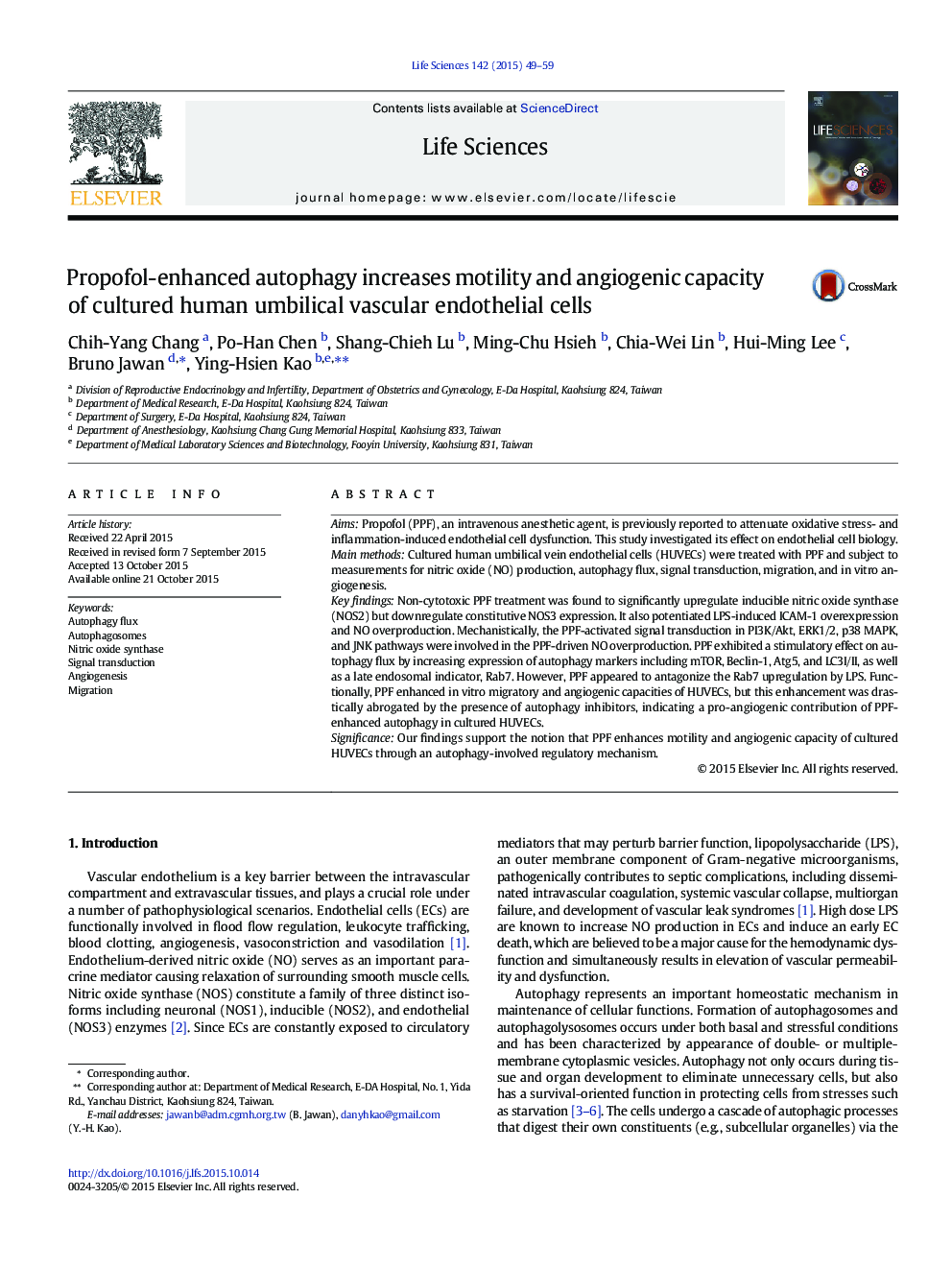| Article ID | Journal | Published Year | Pages | File Type |
|---|---|---|---|---|
| 2550777 | Life Sciences | 2015 | 11 Pages |
AimsPropofol (PPF), an intravenous anesthetic agent, is previously reported to attenuate oxidative stress- and inflammation-induced endothelial cell dysfunction. This study investigated its effect on endothelial cell biology.Main methodsCultured human umbilical vein endothelial cells (HUVECs) were treated with PPF and subject to measurements for nitric oxide (NO) production, autophagy flux, signal transduction, migration, and in vitro angiogenesis.Key findingsNon-cytotoxic PPF treatment was found to significantly upregulate inducible nitric oxide synthase (NOS2) but downregulate constitutive NOS3 expression. It also potentiated LPS-induced ICAM-1 overexpression and NO overproduction. Mechanistically, the PPF-activated signal transduction in PI3K/Akt, ERK1/2, p38 MAPK, and JNK pathways were involved in the PPF-driven NO overproduction. PPF exhibited a stimulatory effect on autophagy flux by increasing expression of autophagy markers including mTOR, Beclin-1, Atg5, and LC3I/II, as well as a late endosomal indicator, Rab7. However, PPF appeared to antagonize the Rab7 upregulation by LPS. Functionally, PPF enhanced in vitro migratory and angiogenic capacities of HUVECs, but this enhancement was drastically abrogated by the presence of autophagy inhibitors, indicating a pro-angiogenic contribution of PPF-enhanced autophagy in cultured HUVECs.SignificanceOur findings support the notion that PPF enhances motility and angiogenic capacity of cultured HUVECs through an autophagy-involved regulatory mechanism.
Graphical abstractFigure optionsDownload full-size imageDownload high-quality image (173 K)Download as PowerPoint slide
